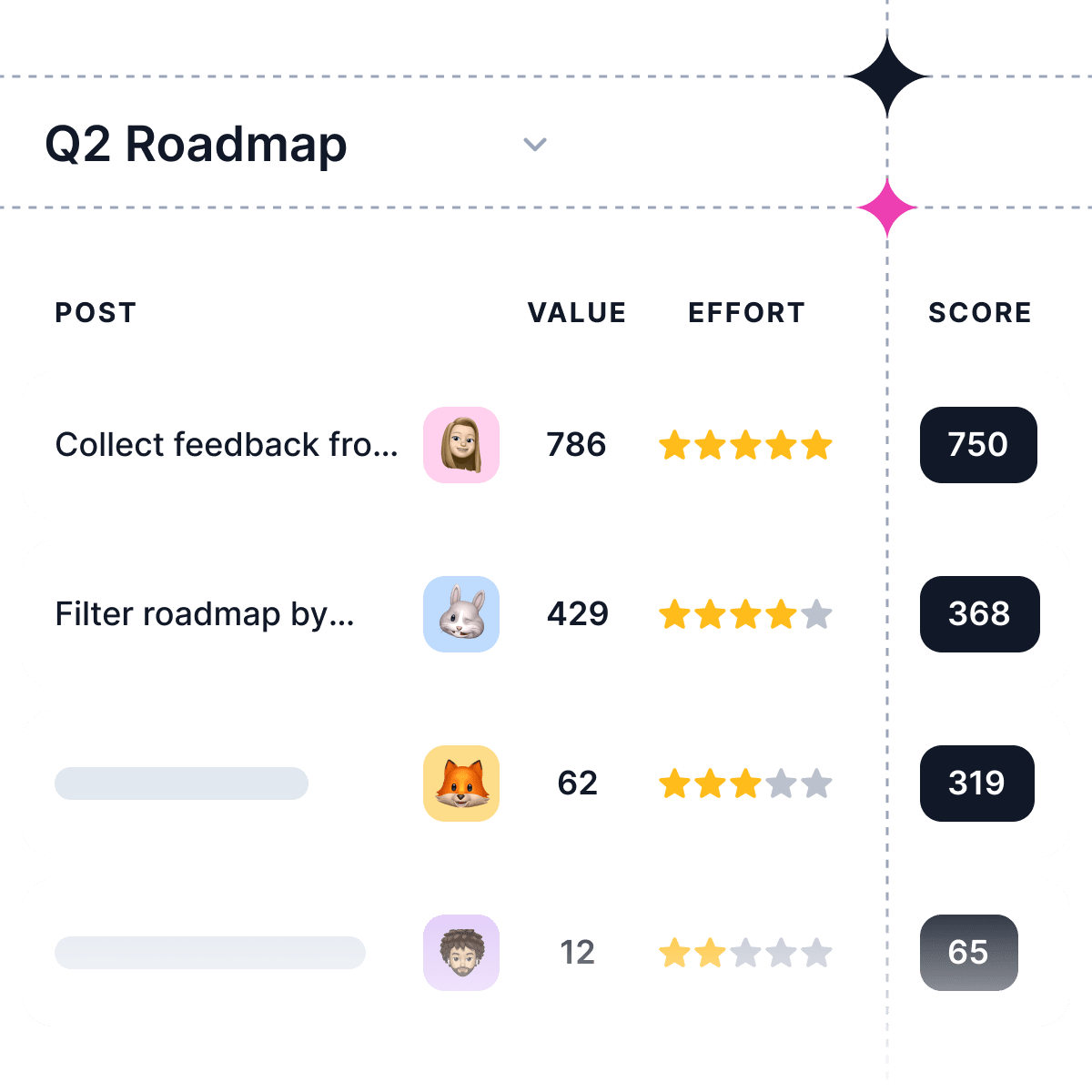User engagement refers to the level of interaction between users and a website, app, or another digital platform. The more engaged users are, the more likely they are to continue using the platform and providing valuable feedback. In this blog, we'll take a closer look at what user engagement is, why it matters, and how businesses can improve it.
What is user engagement?
User engagement can be defined as the measure of how much and how often users interact with a digital platform. This can include things like reading content, leaving comments, sharing posts, making purchases, and more. Essentially, any action a user takes on a platform can be considered a form of engagement.
Why does user engagement matter?
User engagement is important for a number of reasons. First and foremost, it is a key indicator of how well a platform is performing. If users are engaged, it means that they are finding value in the platform and are likely to continue using it. This can lead to increased revenue, customer loyalty, and brand recognition.
Secondly, user engagement can provide valuable insights into how users are interacting with a platform. By analyzing engagement data, businesses can identify areas for improvement and make changes to better meet the needs of their users.
Measuring User Engagement Metrics
Measuring user engagement metrics is crucial for businesses looking to improve their digital platforms. By analyzing engagement data, businesses can identify areas for improvement and make changes that better meet the needs of their users.
Here are some key user engagement metrics that businesses should be tracking:
1. Time on site
Time on site refers to the amount of time that users spend on a platform. This metric is important because it indicates how engaging and valuable users find the content or services provided by the platform. If users are spending more time on the platform, it suggests that they are finding value in it.
2. Bounce rate
Bounce rate refers to the percentage of visitors who leave a website after viewing only one page. A high bounce rate can indicate a number of issues with a platform, such as slow loading times, poor navigation, or unappealing content.
3. Click-through rate (CTR)
Click-through rate refers to the percentage of users who click on a link or button within a platform. This metric is important because it indicates how effective calls-to-action are at encouraging user engagement.
4. Conversion rate
Conversion rate refers to the percentage of visitors who take a desired action on a platform, such as making a purchase or filling out a form. This metric is important because it indicates how successful a platform is at achieving its goals.
5. Social media engagement
Social media engagement includes metrics such as likes, shares, comments, and followers on social media platforms like Facebook, Twitter, and Instagram. These metrics are important because they indicate how well a brand is connecting with its audience and building relationships with its followers.
By tracking these user engagement metrics and using them to inform improvements to their platforms, businesses can increase user engagement and build stronger relationships with their customers.
How can businesses improve user engagement?
Improving user engagement requires a multi-faceted approach. Here are some strategies that businesses can use to increase engagement:
1. Provide high-quality content
One of the most effective ways to increase user engagement is to provide high-quality content relevant to your target audience. This can include everything from blog posts and videos to social media updates and email newsletters. The key is to create content that is informative, entertaining, and valuable to your users.
2. Make it easy to use
Another important factor in user engagement is the ease of use. If your platform is difficult to navigate or confusing, users are less likely to engage with it. Make sure that your platform is intuitive and user-friendly, with clear calls to action and easy-to-find information.
3. Encourage user feedback
User feedback is an invaluable source of information for businesses looking to improve engagement. Encourage users to leave comments, reviews, and ratings, and use this feedback to make changes and improvements to your platform.
4. Use personalization
Personalization is another effective way to increase user engagement. By using data to understand the preferences and behaviors of your users, you can deliver personalized content and experiences that are more likely to resonate with them.
5. Gamification
Gamification is the application of game-design elements and game principles in non-game contexts. Gamification can increase user engagement, by making the platform more fun and interactive.
What are the 4 stages of user engagement?
Here are the four stages of user engagement:
1. Discovery
The discovery stage is when a user first becomes aware of a platform or brand. This could happen through social media, advertising, word-of-mouth recommendations, or other forms of marketing. During this stage, users are not yet engaged with the platform and may not know much about it.
To engage users in the discovery stage, businesses should focus on creating compelling content and messaging that captures their attention and piques their interest.
2. Onboarding
The onboarding stage is when a user signs up for a platform or creates an account. During this stage, users are still learning about the platform and how it works. They may be hesitant to engage fully until they feel comfortable with the platform.
To engage users in the onboarding stage, businesses should focus on providing clear guidance and support to help users get started. This could include tutorials, walkthroughs, or other forms of onboarding content.
3. Engagement
The engagement stage is when users begin to interact with the platform regularly. This could include reading content, leaving comments, sharing posts, making purchases, or taking other actions that indicate a high level of engagement.
To engage users in this stage, businesses should focus on providing high-quality content and experiences that keep them coming back for more. Personalization can also be effective at this stage by delivering tailored content based on user preferences and behaviors.
4. Retention
The retention stage is when engaged users become loyal customers who continue to use the platform over time. These are the users who leave reviews and ratings or recommend the platform to others.
To retain these valuable users, businesses should focus on providing exceptional customer service, delivering personalized experiences, and continuously improving the platform based on user feedback.
By understanding these four stages of user engagement and tailoring their strategies to meet the needs of users at each stage, businesses can increase engagement, build strong relationships with their customers, and achieve long-term success.
Leveraging User-Generated Content to Increase Engagement
User-generated content (UGC) is any form of content created by users of a platform, such as reviews, ratings, photos, and videos. UGC can be a powerful tool for increasing user engagement because it provides social proof and allows users to feel like they are part of a community. Here are some ways that businesses can leverage UGC to increase engagement:
1. Showcase UGC on the Platform
One simple way to leverage UGC is to showcase it on the platform itself. This can include featuring user reviews or testimonials prominently on product pages, displaying user-generated photos or videos in galleries or slideshows, or highlighting user comments or discussions in forums.
2. Encourage Users to Create and Share UGC
Another effective strategy is to actively encourage users to create and share UGC. This can be done through calls-to-action on the platform, incentives such as contests or giveaways for users who create and share UGC, or simply by making it easy for users to submit their own content.
3. Use UGC in Marketing Campaigns
Businesses can also leverage UGC in marketing campaigns outside of the platform itself. For example, incorporating user-generated photos or videos into social media ads, featuring customer testimonials in email marketing campaigns, or using customer reviews in print advertisements.
By leveraging user-generated content effectively, businesses can increase engagement and build stronger relationships with their users.
What is engagement vs. engaged users?
Engagement and engaged users are two related but distinct concepts in the world of digital platforms. Engagement refers to the level of interaction between a user and a platform, while engaged users are those who have demonstrated a high level of engagement over time.
To better understand the difference between engagement and engaged users, let's take a closer look at each concept.
Engagement
As mentioned earlier in this blog, engagement refers to the measure of how much and how often users interact with a digital platform. This can include things like reading content, leaving comments, sharing posts, making purchases, and more. Essentially, any action a user takes on a platform can be considered a form of engagement.
Engagement is important because it indicates how well a platform is performing and whether users are finding value in it. However, not all forms of engagement are equal. For example, someone who leaves a one-word comment on an article is technically engaging with the platform, but their level of engagement is low compared to someone who leaves a thoughtful comment that sparks discussion.
Engaged Users
Engaged users are those who have demonstrated a high level of engagement over time. These are the users who regularly visit the platform, leave comments or reviews, share content with their networks, make purchases, or take other actions that demonstrate their commitment to the platform.
Engaged users are important because they are more likely to become loyal customers or advocates for the brand. They may also provide valuable feedback that can help businesses improve their platform and better serve their customers.
In summary, while engagement refers to any form of interaction between a user and a platform, engaged users are those who have demonstrated sustained levels of high engagement over time. Both concepts are important for businesses looking to build strong relationships with their customers and improve their digital platforms.
Conclusion
User engagement is a vital component of any successful digital platform. By measuring and improving user engagement metrics, businesses can gain valuable insights into how users are interacting with their platforms and make changes to better meet their needs. Strategies for improving user engagement include providing high-quality content, making the platform easy to use, encouraging user feedback, using personalization and gamification, and leveraging user-generated content.
It's important to remember that engagement and engaged users are two distinct concepts. While all forms of engagement are important indicators of platform performance, engaged users are those who have demonstrated sustained levels of high engagement over time. By building strong relationships with these users, businesses can increase customer loyalty and brand recognition.
In conclusion, by prioritizing user engagement and implementing strategies to improve it, businesses can create digital platforms that provide value to their users while achieving their own goals.


